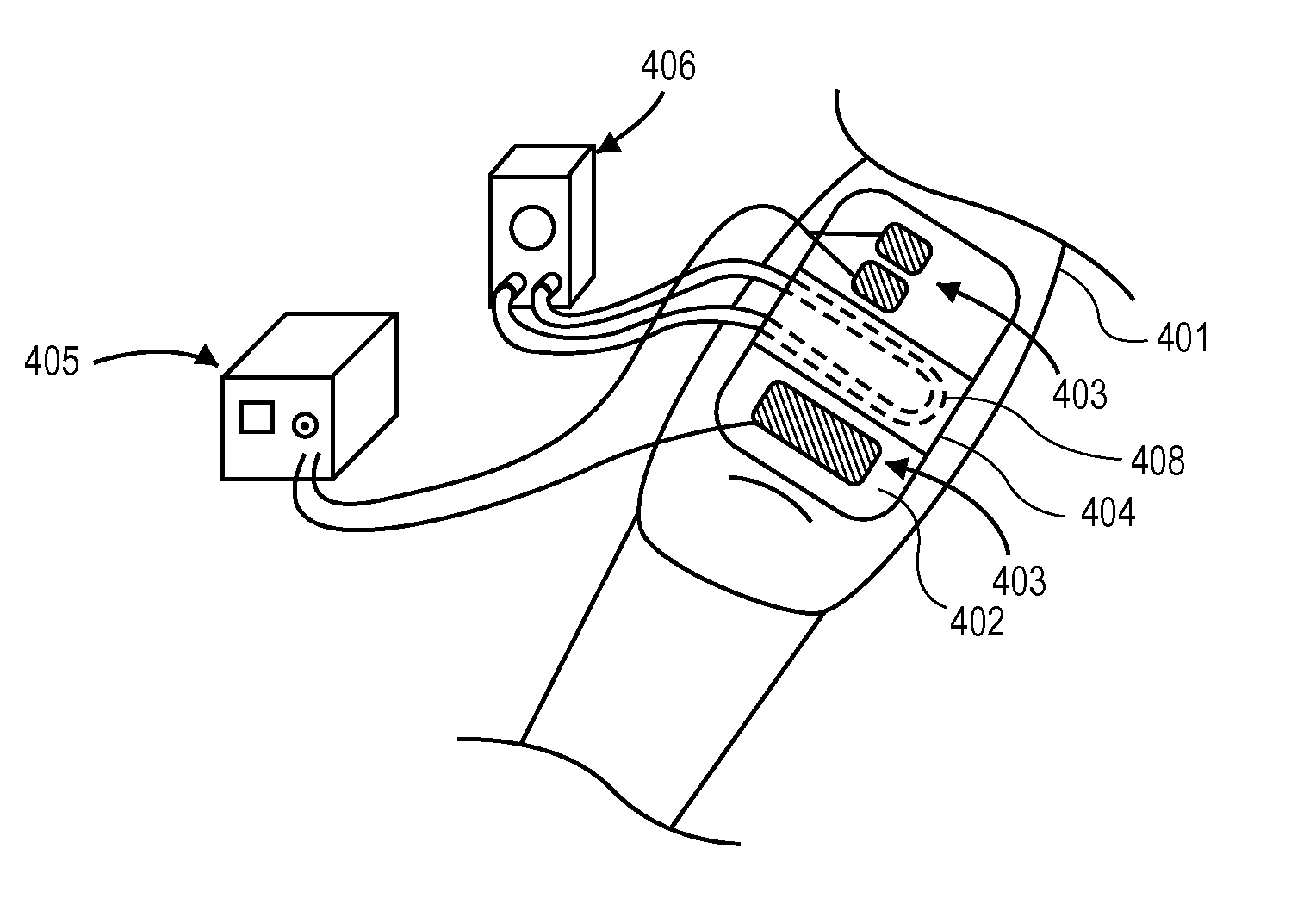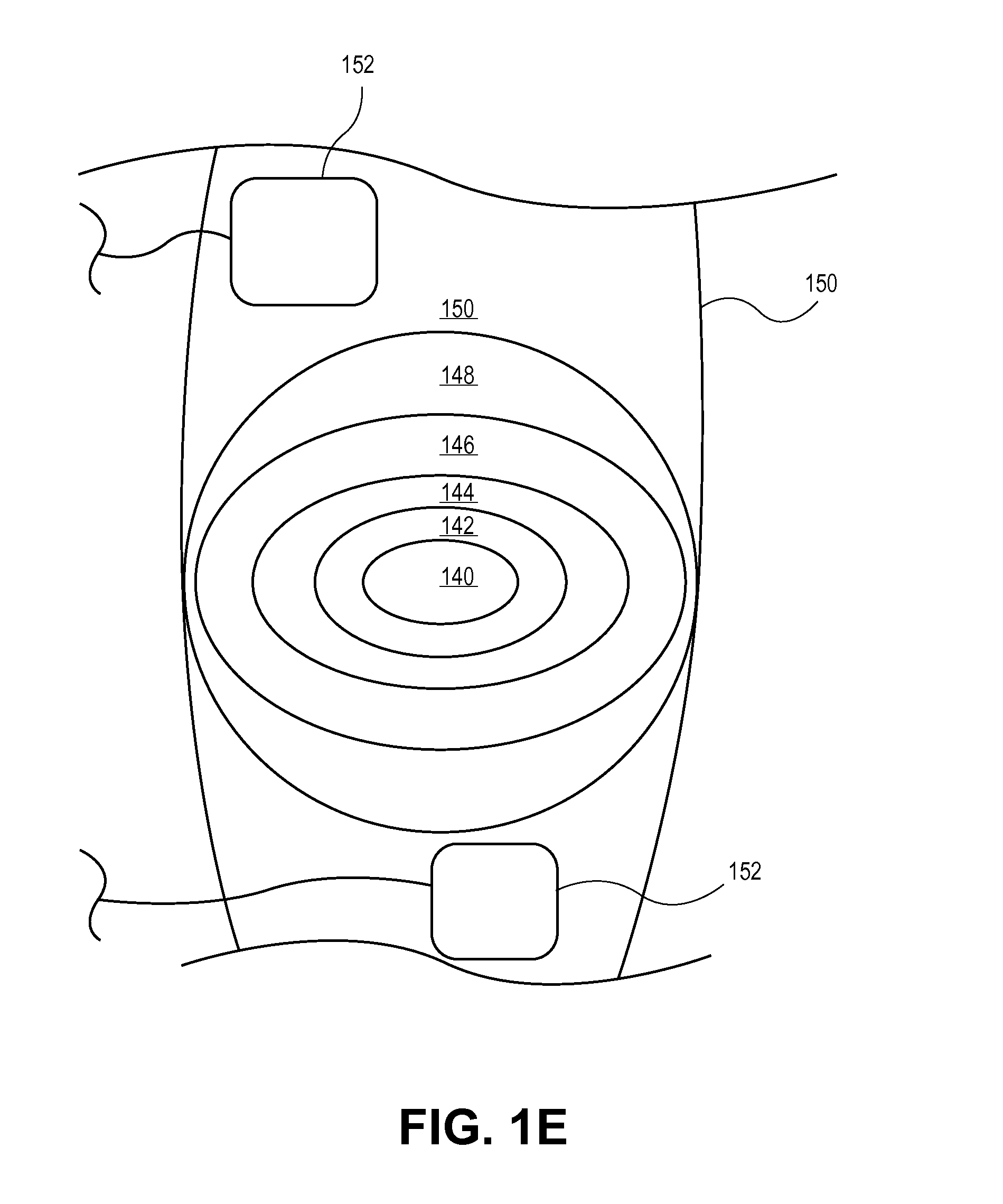Devices and Systems for Stimulation of Tissues
a tissue and device technology, applied in the direction of contraceptive devices, artificial respiration, therapy, etc., can solve the problems of severe effects on a person's physical capacity, severe muscle atrophy and weakness, and sedated or comatose patients are at a great risk of muscle atrophy, so as to reduce the temperature of the skin, and reduce the thermal conductivity
- Summary
- Abstract
- Description
- Claims
- Application Information
AI Technical Summary
Benefits of technology
Problems solved by technology
Method used
Image
Examples
example
[0253]A research study has investigated the NMES therapy with skin cooling disclosed herein. Twenty healthy volunteers were recruited. The first group (Group 1) of ten volunteers included all-corners (median age 44 years, range 22-70 years, median BMI 25.0, range 22.0-38.3). The second group (Group 2) of volunteers consisted entirely of clinically obese (BMI>30.0) individuals (median age 53 years, range 25-75 years, median BMI 32.4, range 30.1-39.6). An additional research study that recruits critically ill patients is underway, and preliminary results are available.
[0254]In the first study, volunteers had their posture stabilized and muscle stimulation electrodes were applied in a mirror image configuration on each thigh in the region of the quadriceps. A medical dynamometer was placed over each ankle. During muscle stimulation, the quadriceps contracts, causing the leg to extend. The medical dynamometer reads this leg extension force. Leg extension force for a fixed (constant) amo...
PUM
 Login to View More
Login to View More Abstract
Description
Claims
Application Information
 Login to View More
Login to View More - R&D
- Intellectual Property
- Life Sciences
- Materials
- Tech Scout
- Unparalleled Data Quality
- Higher Quality Content
- 60% Fewer Hallucinations
Browse by: Latest US Patents, China's latest patents, Technical Efficacy Thesaurus, Application Domain, Technology Topic, Popular Technical Reports.
© 2025 PatSnap. All rights reserved.Legal|Privacy policy|Modern Slavery Act Transparency Statement|Sitemap|About US| Contact US: help@patsnap.com



